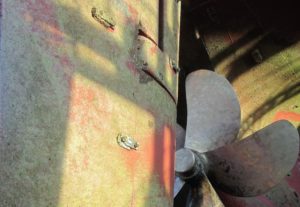From May 2018, all vessels arriving in New Zealand must have clean hulls and provide evidence of biofouling management prior to arrival. Vessels staying up to 21 days and only visiting designated ports (places of first arrival) will be allowed a slight amount of biofouling. Vessels staying longer and visiting other places will only be allowed a slime layer and goose barnacles.
Shipping Operators will be able to meet the new clean hull requirements by doing one of the following:
-Cleaning the vessel hull less than 30 days before arrival in New Zealand
-Doing continual hull maintenance using best practices
-Booking an appointment for the vessel to be hauled out and cleaned by an MPI-approved treatment supplier within 24 hours of arrival
New Zealand’s government requirements are based on the International Maritime Organisation’s ‘Guidelines for the control and management of ships’ biofouling to minimize the transfer of invasive aquatic species’. IMO guidelines provide examples of biofouling management best practice. Species contains examples of current best practice. Following these will be considered as compliance with New Zealand’s requirements.
BIOFOULING MANAGEMENT PLAN (BMP)

The guidelines include that vessels should have a vessel specific biofouling management plan including a hull maintenance programme, antifouling systems, documentation, inspections and a record of actions as per biofouling management plan, design and construction to reduce areas prone to biofouling growth.
Vessel operations should be aligned with BMP and it is masters’ responsibility to keep BMP onboard adequately, to review the plan regularly and to ensure that the information and record contained therein is accurate and updated. Crew members training should be carried out as per BMP measures and associated safety procedures for their familiarization to these activities.
Vessel’s biofouling documentation includes but not limited to Biofouling Management Plan and record book, dates and reports of dry docking, details of the coatings (type, application dates and details, hull areas where applied), anti-fouling certificate, disposal of biological waste, Marine Growth Prevention System operation and maintenance, evidence of independent inspections, safety procedures for the ship and crew, ships operating profile and history, crew training and familiarization.
Source: www.mpi.govt.nz
Contact us to conduct a detailed gap analysis &
to receive a professional advisory in your area of interest.
